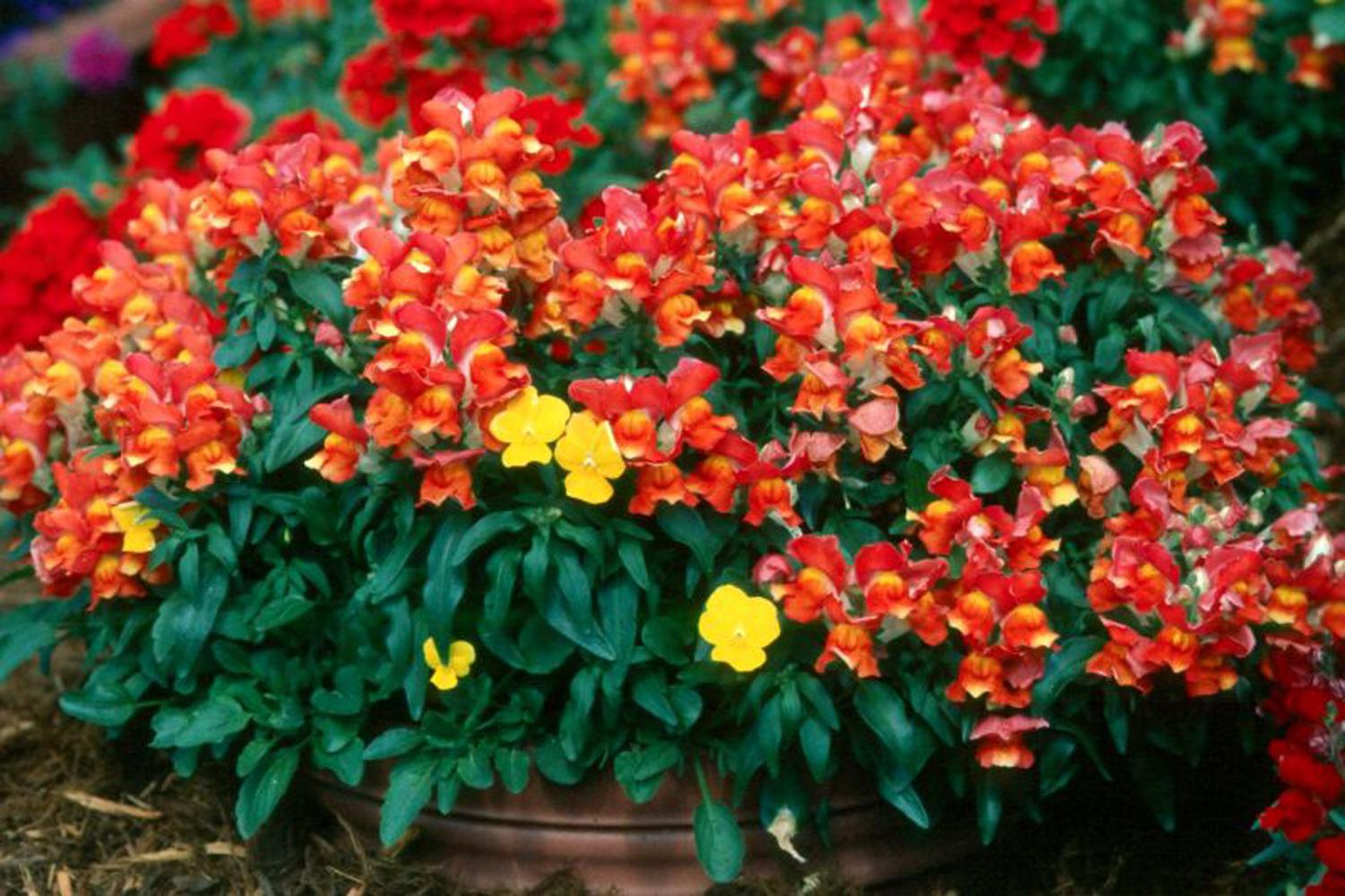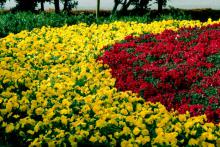Information Possibly Outdated
The information presented on this page was originally released on October 30, 2003. It may not be outdated, but please search our site for more current information. If you plan to quote or reference this information in a publication, please check with the Extension specialist or author before proceeding.
Snapdragons mesmerize as cool-season plantings
By Norman Winter
MSU Horticulturist
The first flower to capture my eye as a child was the snapdragon. I am sure it was the stunning, vibrant colors coupled with the wonderful fragrance.
I recently have seen two of the best selections of snapdragons ever, one in Ocean Springs and one in Jackson. The snapdragon is one of our best cool-season flowers, and now is the time to get them planted.
Native to Europe and the Mediterranean, the snapdragon is known botanically as Antirrhinum majus. New breeding has made the snapdragon surprisingly tough -- it can be planted in zone 7 southward, and it blooms through May and into June. Newer varieties also perform well.
If you plant now, the snapdragon will be in the ground eight or nine months, so bed preparation will pay off. Select a site in full sun for best bloom production. Incorporate 3 to 4 inches of organic matter along with 2 pounds of a slow-release 12-6-6 fertilizer per 100 square feet of planting area.
Set transplants in the garden at the recommended spacing for your variety. This may mean some selections, like Rockets, should go toward the back of the border, and others, like the Montegos, up front. Apply a good layer of mulch to keep soil temperatures moderate and give added winter protection.
Deadhead snapdragons for a tidy appearance and to keep flowers producing. If unusually cold weather is forecasted, completely cover them with pine straw until the temperatures have moderated.
Pay attention to moisture levels during the winter. While soggy feet can be lethal, many cold fronts in the South dry out beds to a severe level. As growth becomes more active in late winter or early spring, side dress with a light application of fertilizer.
Snapdragons are ideal companions for pansies, violas, flowering cabbage and kale, as well as bulbs like daffodils. Don't forget to use in mixed containers. Your local garden center probably sells both mixes and flats of single colors.
Without a doubt, single-colored plantings will stop traffic. Try combining these with a pansy mix or with pansies that have blotches. Mixed snapdragon plantings are just as showy but are easier to combine with single-colored pansies without blotches.
You will probably be surprised by the variety of snapdragons available. The new series that looks the most outstanding is the Montego, which grows 8 to 12 inches tall. Other dwarf or miniature varieties of the same height are Floral Showers, Tahiti and Bells.
For intermediate selections, look for Crown (12 to18 inches), Liberty Classic and Sonnet (both 24 to 30 inches). The old-fashioned, 3- to 4-foot Rocket is still one of the most prized in the landscape.
New trailing series Lampion, Chandelier and Lumenaire offer additional heat tolerance by virtue of hybridization with A. hispanicum and A. molle from Spain.




